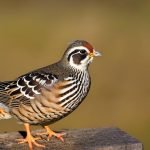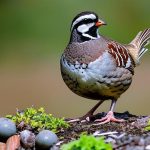When it comes to choosing the right enclosure for your pet, there are several factors to consider. First and foremost, you need to consider the size of the enclosure. It should be large enough to allow your pet to move around comfortably and exhibit natural behaviors. For example, if you have a reptile, you’ll need an enclosure that provides enough space for basking, hiding, and climbing. Additionally, the material of the enclosure is important. Glass enclosures are great for animals that require high humidity levels, while plastic or wooden enclosures may be more suitable for animals that require better ventilation. It’s also important to consider the security of the enclosure. Make sure it has secure locks and is escape-proof to prevent your pet from getting out and getting into trouble. Lastly, consider the aesthetics of the enclosure. It should not only provide a suitable environment for your pet but also look good in your home.
When selecting an enclosure for your pet, it’s crucial to take into account the specific needs of the animal. For example, if you have a small mammal like a hamster or a gerbil, a wire cage with a solid bottom may be the best option. This will allow for proper ventilation while also preventing your pet from escaping. On the other hand, if you have a reptile, a glass terrarium with a secure lid may be more appropriate. This will provide the necessary warmth and humidity levels for your pet. Additionally, consider the ease of maintenance when choosing an enclosure. Some enclosures may be more difficult to clean and maintain than others, so it’s important to choose one that fits your lifestyle and schedule. Overall, the right enclosure should provide a safe, comfortable, and suitable environment for your pet to thrive in.
Key Takeaways
- Choose an enclosure that is appropriate for the size and needs of your pet, providing enough space for movement and natural behaviors.
- Proper ventilation is essential to prevent the buildup of harmful gases and maintain air quality within the enclosure.
- Create a suitable diet for your pet, considering their species, age, and specific nutritional requirements.
- Regularly clean and disinfect the enclosure to prevent the spread of bacteria and parasites, and to maintain a healthy environment for your pet.
- Manage noise levels in the environment to reduce stress and promote a sense of security for your pet.
- Ensure adequate lighting within the enclosure, providing a natural day-night cycle and appropriate UVB exposure for your pet’s health.
- Monitor temperature and humidity levels to create a comfortable and stable environment for your pet, adjusting as needed to mimic their natural habitat.
Providing proper ventilation
Proper ventilation is essential for maintaining a healthy and comfortable environment for your pet. Without adequate ventilation, the enclosure can become stuffy and humid, leading to respiratory issues and other health problems for your pet. When it comes to providing proper ventilation, it’s important to consider the type of animal you have and their specific needs. For example, reptiles require good air circulation to maintain proper humidity levels, while small mammals like hamsters and gerbils need fresh air to prevent ammonia buildup from their waste. Additionally, it’s important to consider the type of enclosure you have. Glass enclosures may require additional ventilation to prevent condensation and mold growth, while wire cages may provide sufficient airflow on their own.
In order to provide proper ventilation for your pet, consider adding ventilation holes or vents to the enclosure if necessary. This will allow for better air circulation and prevent the buildup of stale air. Additionally, consider the placement of the enclosure. Avoid placing it in areas with poor air circulation or near sources of heat or moisture that can affect the airflow within the enclosure. Lastly, make sure to clean the enclosure regularly to prevent the buildup of waste and debris that can affect air quality. By providing proper ventilation, you can ensure that your pet has a healthy and comfortable living environment.
Creating a suitable diet
Creating a suitable diet for your pet is crucial for their overall health and well-being. Different animals have different dietary needs, so it’s important to research and understand what your specific pet requires in terms of nutrition. For example, reptiles may require a diet high in protein and calcium, while small mammals like rabbits and guinea pigs need a diet high in fiber and low in fat. When creating a suitable diet for your pet, it’s important to consider their age, size, activity level, and any specific health issues they may have. Additionally, it’s important to provide a variety of foods to ensure that your pet receives all the necessary nutrients.
When creating a suitable diet for your pet, it’s important to consult with a veterinarian or an experienced pet owner to ensure that you are meeting all of your pet’s nutritional needs. Additionally, consider offering fresh fruits and vegetables as treats to provide additional nutrients and enrichment for your pet. It’s also important to monitor your pet’s weight and adjust their diet as needed to prevent obesity or malnutrition. Overall, creating a suitable diet for your pet is essential for their overall health and well-being.
Maintaining cleanliness
Maintaining cleanliness in your pet’s enclosure is essential for their health and well-being. A dirty enclosure can lead to the buildup of bacteria, mold, and parasites that can cause illness and discomfort for your pet. When it comes to maintaining cleanliness, it’s important to establish a regular cleaning routine. This may include daily spot cleaning to remove waste and debris, as well as weekly deep cleaning to sanitize the enclosure and remove any buildup of waste or food.
When maintaining cleanliness in your pet’s enclosure, it’s important to use safe cleaning products that are free from harsh chemicals and fragrances that can be harmful to your pet. Additionally, consider using natural cleaning methods such as vinegar and water or baking soda to clean and deodorize the enclosure. It’s also important to regularly wash and replace bedding or substrate to prevent the buildup of waste and bacteria. Lastly, make sure to clean food and water dishes regularly to prevent contamination and ensure that your pet has access to clean and fresh food and water at all times.
Managing noise levels
Managing noise levels is important for creating a stress-free environment for your pet. Loud noises can cause anxiety and discomfort for many animals, so it’s important to consider the noise level in your home when choosing a location for your pet’s enclosure. Additionally, consider the type of animal you have and their sensitivity to noise. For example, small mammals like hamsters and gerbils have sensitive hearing and may be easily startled by loud noises, while reptiles may be less affected by noise.
When managing noise levels for your pet, consider placing their enclosure in a quiet area of your home away from sources of loud noise such as televisions, stereos, or appliances. Additionally, consider using sound-absorbing materials such as rugs or curtains to help reduce noise levels in the area where your pet is housed. If you have a particularly noise-sensitive pet, consider using white noise machines or calming music to help mask loud noises and create a more peaceful environment for your pet.
Ensuring adequate lighting

Ensuring adequate lighting is essential for maintaining a healthy environment for your pet. Different animals have different lighting requirements based on their natural habitat and behavior. For example, reptiles require UVB lighting to help them metabolize calcium and maintain healthy bones, while small mammals like hamsters and gerbils require a regular day-night cycle to maintain their natural circadian rhythms.
When ensuring adequate lighting for your pet, it’s important to research their specific lighting needs and provide appropriate lighting fixtures such as UVB bulbs or full-spectrum lights as needed. Additionally, consider providing natural light exposure by placing their enclosure near a window or using natural daylight bulbs to mimic natural sunlight. It’s also important to establish a regular day-night cycle by providing 12-14 hours of light followed by 10-12 hours of darkness each day.
Monitoring temperature and humidity
Monitoring temperature and humidity levels is crucial for creating a suitable environment for your pet. Different animals have different temperature and humidity requirements based on their natural habitat and behavior. For example, reptiles require specific temperature gradients within their enclosure to regulate their body temperature, while small mammals like rabbits and guinea pigs require moderate temperatures and low humidity levels.
When monitoring temperature and humidity levels for your pet, it’s important to invest in quality thermometers and hygrometers to accurately measure these parameters within their enclosure. Additionally, consider using heating pads or heat lamps to provide additional warmth as needed, especially for animals that require specific temperature gradients within their enclosure. It’s also important to regularly mist or provide a humidifier in the enclosure as needed to maintain appropriate humidity levels for your pet.
In conclusion, providing a suitable environment for your pet requires careful consideration of their specific needs in terms of housing, ventilation, diet, cleanliness, noise levels, lighting, temperature, and humidity. By taking these factors into account and making adjustments as needed, you can ensure that your pet has a safe, comfortable, and healthy living environment that promotes their overall well-being.
If you’re interested in keeping quail indoors, you may also want to learn about the benefits of raising guinea fowl. Check out this informative article on when guinea fowl lay eggs to discover more about these fascinating birds and how to care for them.
FAQs
What are the benefits of keeping quail indoors?
Keeping quail indoors can provide a controlled environment for their safety and well-being. It also allows for easier monitoring of their health and behavior.
What are the basic requirements for keeping quail indoors?
Basic requirements for keeping quail indoors include a suitable enclosure, proper bedding, access to food and water, and adequate ventilation.
What type of enclosure is suitable for keeping quail indoors?
A suitable enclosure for keeping quail indoors should provide enough space for the birds to move around comfortably, as well as protection from predators and the elements. It should also be easy to clean and maintain.
What should be used as bedding for indoor quail enclosures?
Bedding for indoor quail enclosures can include materials such as pine shavings, straw, or sand. It should be absorbent, easy to clean, and provide a comfortable surface for the quail to walk on.
What should be included in the diet of indoor quail?
The diet of indoor quail should include a balanced commercial quail feed, as well as access to grit and fresh water. They may also benefit from occasional treats such as mealworms or fresh greens.
How can indoor quail enclosures be kept clean?
Indoor quail enclosures should be cleaned regularly to maintain a healthy environment for the birds. This can be done by removing soiled bedding, wiping down surfaces, and providing fresh water and food.
What are some common health concerns for indoor quail?
Common health concerns for indoor quail include respiratory infections, parasites, and injuries from overcrowding or aggressive behavior. Regular monitoring and proper care can help prevent these issues.
Meet Walter, the feathered-friend fanatic of Florida! Nestled in the sunshine state, Walter struts through life with his feathered companions, clucking his way to happiness. With a coop that’s fancier than a five-star hotel, he’s the Don Juan of the chicken world. When he’s not teaching his hens to do the cha-cha, you’ll find him in a heated debate with his prized rooster, Sir Clucks-a-Lot. Walter’s poultry passion is no yolk; he’s the sunny-side-up guy you never knew you needed in your flock of friends!







